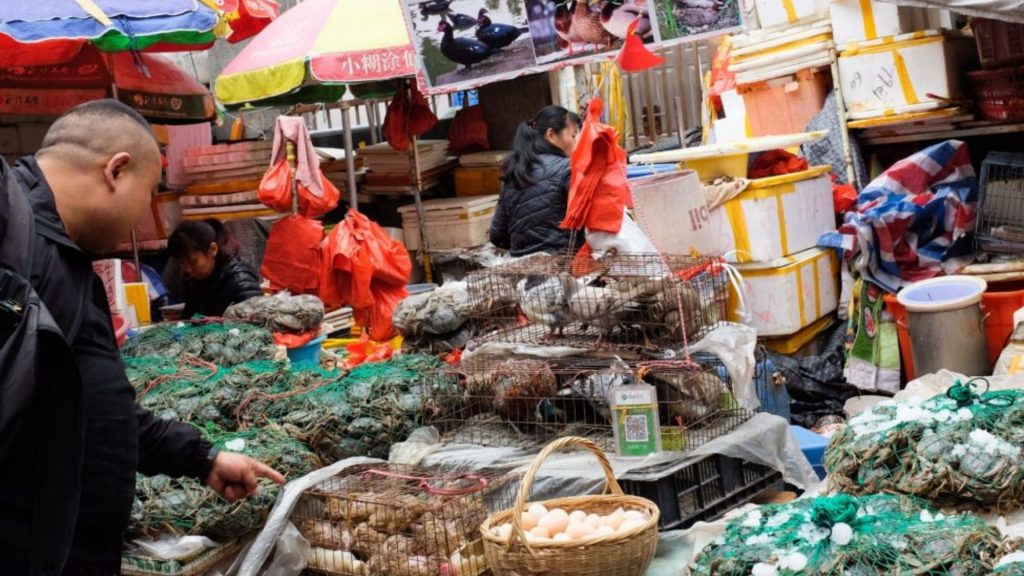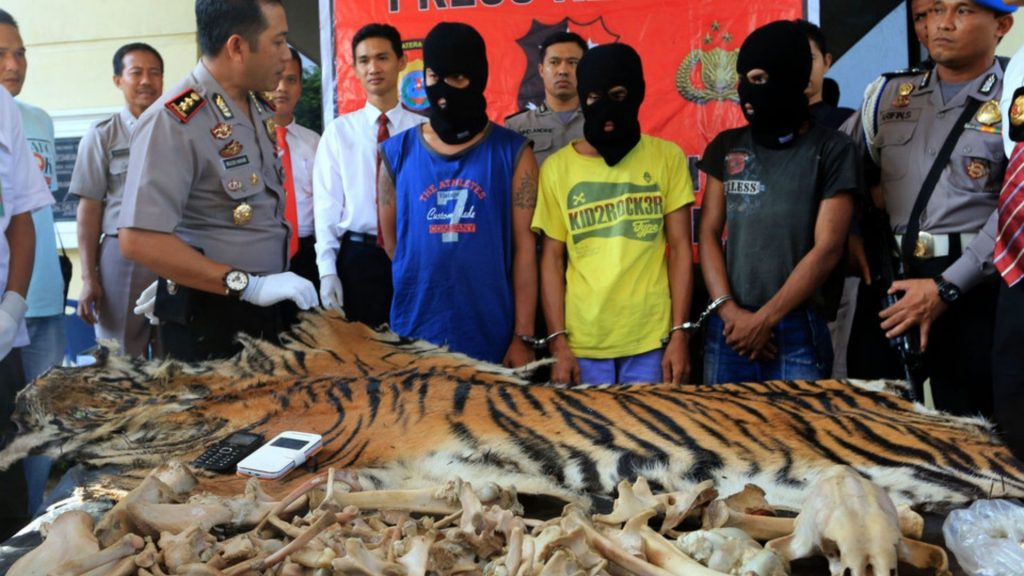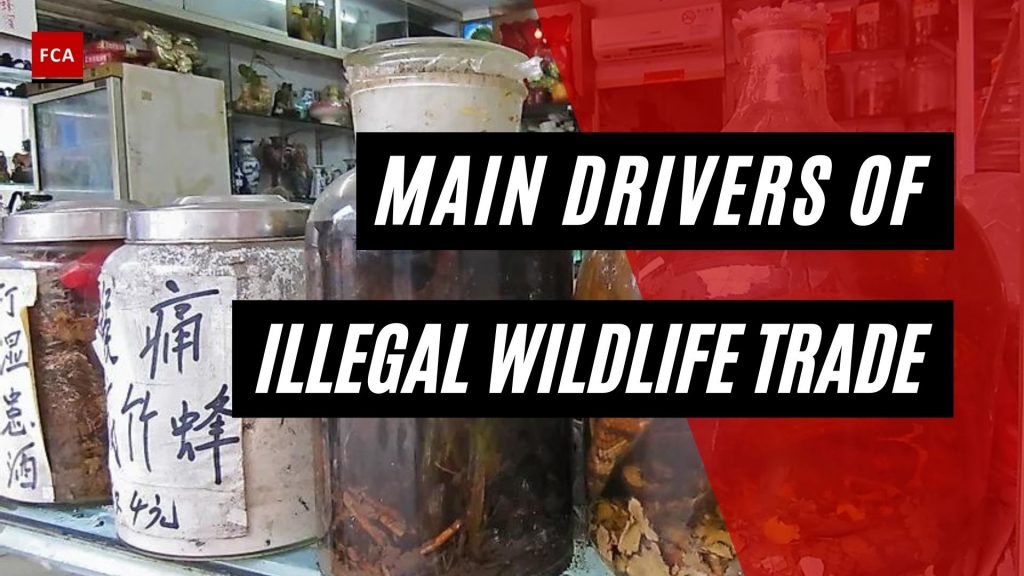¿Cuáles son los principales impulsores del comercio ilegal de especies silvestres? Es ampliamente aceptado y la opinión pública en muchos países que el comercio ilegal de vida silvestre es un delito grave con graves consecuencias, sin embargo, la industria del comercio ilegal de vida silvestre continúa creciendo.
Los principales impulsores del comercio ilegal de especies silvestres
Los principales motores de la industria del comercio de especies silvestres son la medicina tradicional china, la carne de animales silvestres y la caza de trofeos. Boicotear los espectáculos con animales, los paseos en elefante y los selfies con tigres es fundamental para combatir el comercio de animales salvajes. A pesar de la reciente explosión de los medios de comunicación social, mucha gente sigue ignorando por completo las atrocidades que tienen lugar entre bastidores en estas industrias de animales en cautividad. Es urgente abordar el comercio de especies silvestres, que pone en peligro tanto a los animales como al medio ambiente.

Demanda de los consumidores
El continuo crecimiento del comercio ilegal de especies silvestres está impulsado principalmente por la demanda de los consumidores. Diversos consumidores solicitan constantemente una amplia gama de productos de la fauna silvestre, incluyendo partes de animales, productos de animales y derivados de animales, así como árboles, plantas, madera y productos vegetales. Una parte considerable de toda la demanda de los consumidores está relacionada con los bienes de lujo, lo que significa que el consumo está impulsado más por el deseo que por la necesidad.
Medicina tradicional china
Según la investigación, se supone que el uso de productos de la fauna silvestre para la medicina tradicional china, una industria valorada en 60.000 millones de dólares al año, es el principal motor para que continúe el comercio ilegal de fauna silvestre. En 2017, la medicina tradicional china representó más del 40% del mercado farmacéutico en China.
De hecho, la demanda de productos procedentes de la medicina tradicional china crece a un ritmo anual de entre el 5 y el 15%, según un informe del Banco Mundial. Otra estimación de la Organización Mundial de la Salud prevé una tasa de crecimiento del 11% anual.
La expansión del sector de la medicina tradicional china está ejerciendo una gran presión sobre las especies en peligro de extinción, como los rinocerontes y pangolines, los caballitos de mar, los saiga, los tigres, los osos lunares y muchos otros animales. En la mayoría de los casos, la demanda de estos animales parece estar cubierta por la oferta ilegal.
En particular, las empresas chinas activas en el campo de la medicina tradicional china están desarrollando, al parecer, alrededor de 30 instalaciones de fabricación en países extranjeros a lo largo de la cadena de suministro de productos de la fauna silvestre – Y en las proximidades de las rutas del proyecto de infraestructura masiva de China llamado iniciativa «Belt and Road«. De hecho, la medicina tradicional china está reconocida por el gobierno chino como un mercado en crecimiento y de exportación, ya que este tipo de tratamiento médico es ahora popular en más de 180 países del mundo.
Mercados de Internet
En las dos últimas décadas ha surgido otro factor que permite que el comercio ilegal de especies silvestres continúe: El uso generalizado de la tecnología y los métodos de comunicación basados en Internet. Internet también ha influido en las operaciones comerciales de la fauna silvestre, al perturbar los medios tradicionales de compra y venta. Tanto para los cazadores furtivos como para los comerciantes de fauna silvestre, Internet es una vía cómoda, sin complicaciones y en gran medida anónima. Las plataformas de Internet suelen permitir la venta directa al cliente, eliminando la necesidad de intermediarios. El mercado de Internet eBay, por ejemplo, desempeña un papel fundamental en la puesta en contacto de vendedores y compradores de productos de la fauna salvaje, como el marfil.
eBay ha adoptado una postura formal contra la comercialización de productos ilegales de la vida silvestre, incluido el marfil. Según el sitio web, eBay ha prohibido completamente la venta de todo tipo de marfil desde enero de 2009. Sin embargo, esta norma se elude vendiendo marfil bajo el término «marfil falso», aunque muchos objetos, incluidas las antigüedades, no son falsos sino auténticos.
Según un informe de Interpol de 2013, el tráfico de marfil a través de Internet es una gran preocupación en Europa, particularmente en Europa occidental. A pesar de que el estudio abarcó sólo unas horas al día en nueve países durante un periodo de quince días, se traficó con unos 4.500 kilos de marfil. El multimillonario mercado negro de mascotas exóticas y animales salvajes ha convertido Internet en un mercado mundial de productos derivados de la fauna, desde pequeños objetos y medicinas hasta alfombras de piel de especies en peligro de extinción y botas de cuero raras.

Protección Animal Mundial (WAP)
Según la organización World Animal Protection, el valor anual actual del comercio de animales salvajes oscila entre los 30.000 y los 42.800 millones de dólares, de los cuales hasta 20.000 millones son ilegales. Los principales motores del sector son la medicina tradicional china, la carne de caza y la caza de trofeos. El comercio ha acelerado la destrucción del hábitat y la extinción de especies. La UICN ha incluido recientemente ambas especies de elefantes africanos en su Lista Roja de Especies Amenazadas. A pesar de los esfuerzos mundiales, el comercio de marfil está llevando a la especie a la extinción. La situación es mucho peor para las especies que no reciben tanta atención internacional, como las jirafas y los leopardos.
Especies invasoras o mascotas exóticas
La introducción de especies invasoras es otro problema importante. Con frecuencia, los animales exóticos son liberados imprudentemente en la naturaleza, causando estragos en el equilibrio del ecosistema local. La introducción del siluro africano en los arroyos de la India es un ejemplo de ello. Esta especie altamente adaptable ha conquistado gran parte de los humedales de la India, pero su naturaleza altamente depredadora ha destruido numerosos ecosistemas acuáticos, entre ellos el Santuario de Aves de Bharatpur.
La transmisión del virus zoonótico debido al comercio de animales salvajes
El riesgo de transmisión de virus zoonóticos es una de las amenazas más graves para el comercio de animales salvajes. Los patógenos que se han transmitido de los no humanos a los humanos se denominan patógenos zoonóticos. La pandemia de COVID-19 es un ejemplo de los riesgos potenciales para la salud que plantea el comercio ilegal de animales salvajes. En poco más de un año, esta terrible enfermedad se ha cobrado la vida de más de 4 millones de personas.
La lucha contra el comercio ilegal de especies silvestres a través del turismo ético
Afortunadamente, el público en general puede contribuir de forma significativa a la lucha contra el comercio ilegal de fauna y flora silvestres realizando un turismo ético. La mayoría de las atracciones turísticas con animales en cautividad, como los paseos en elefante, los espectáculos con delfines, los osos bailarines, los circos con animales y las instalaciones de entretenimiento con tigres, violan los derechos de los animales de forma significativa.
Los elefantes y los osos bailarines cautivos son capturados de la naturaleza cuando son jóvenes, y casi siempre son separados de sus madres. Durante las interacciones con los turistas, los animales de las instalaciones de entretenimiento con tigres y los espectáculos con delfines son drogados de forma rutinaria. Estas industrias dependen de los ingresos del turismo para seguir funcionando. Boicotear los espectáculos con animales, los paseos en elefante y los selfies con tigres es fundamental para combatir el comercio de animales salvajes.
Reflexiones finales
La codicia y el deseo de obtener beneficios económicos u otros beneficios materiales suelen ser factores que motivan el tráfico de especies silvestres. En consecuencia, los delitos relacionados con el blanqueo del producto del tráfico de especies silvestres y la financiación del tráfico de especies silvestres son otra herramienta importante para penalizar y combatir el tráfico de especies silvestres.








